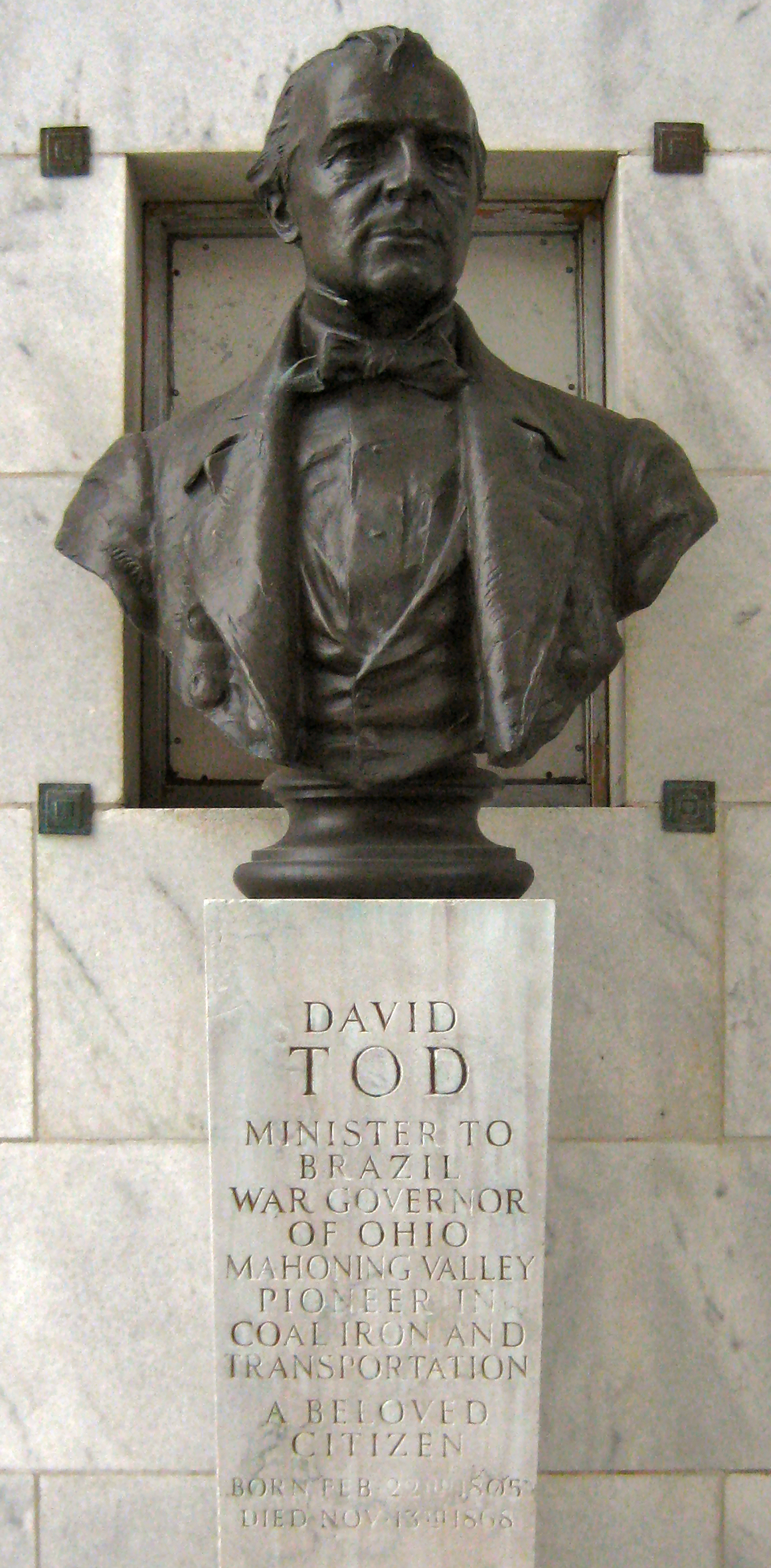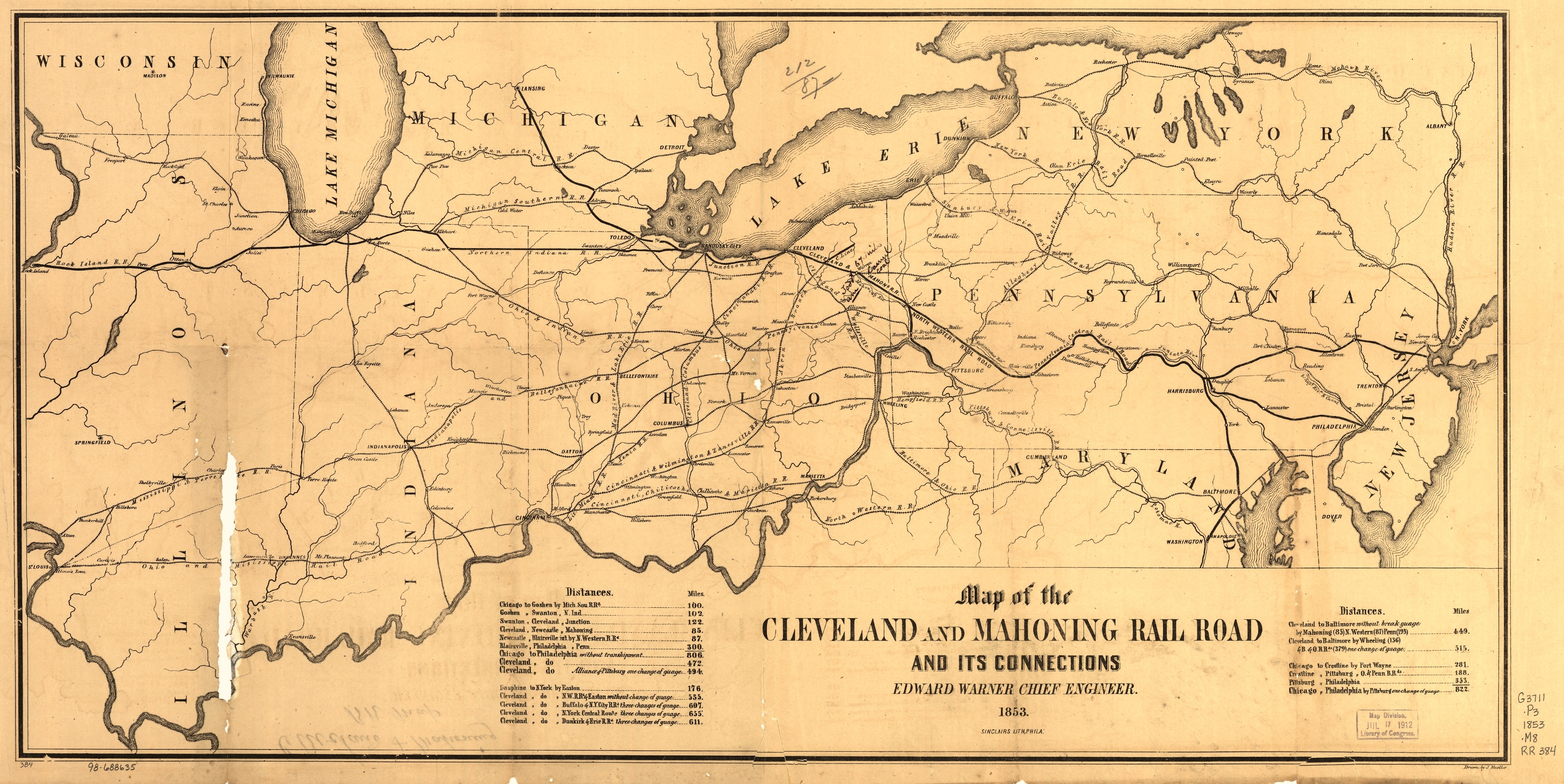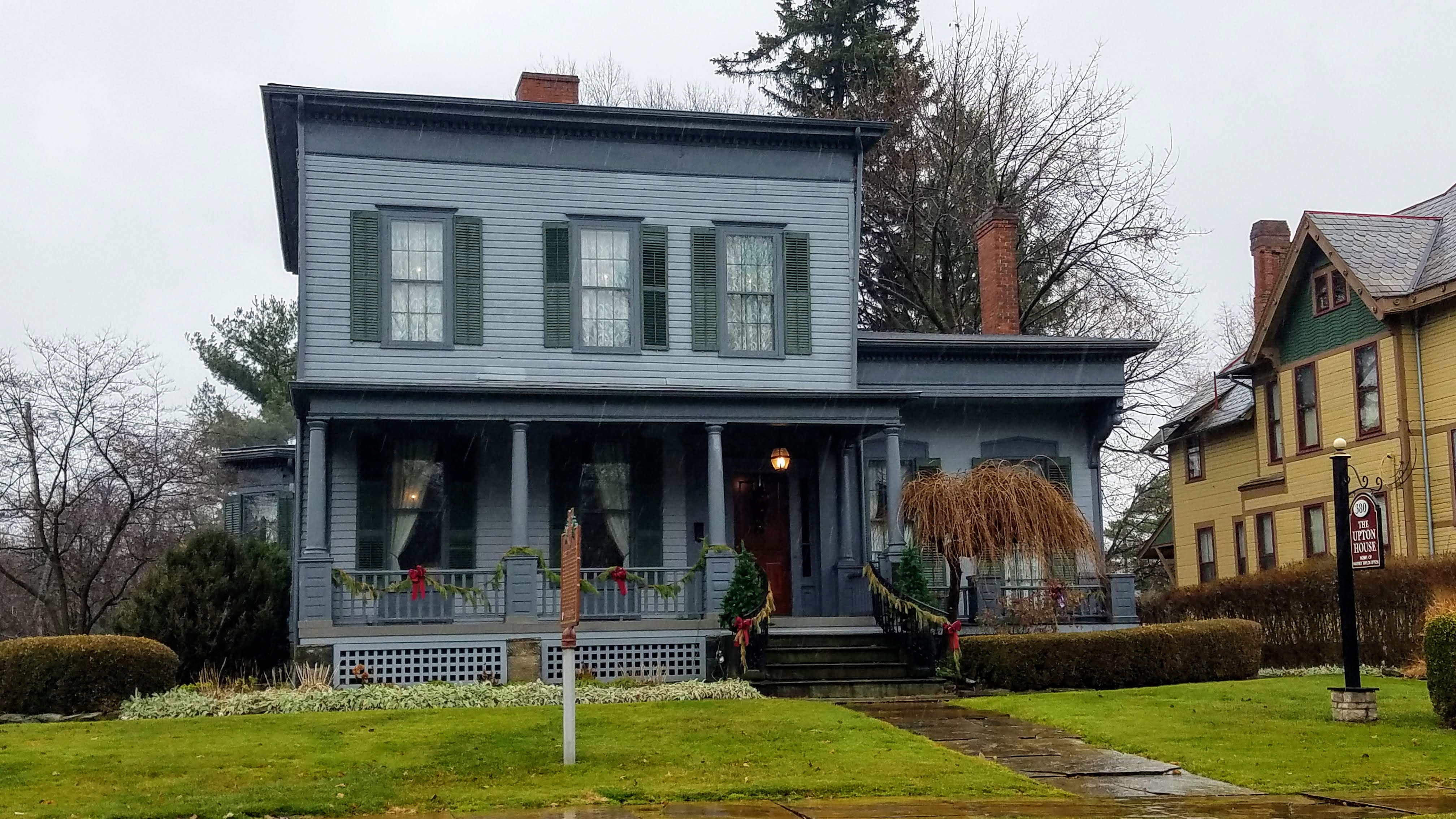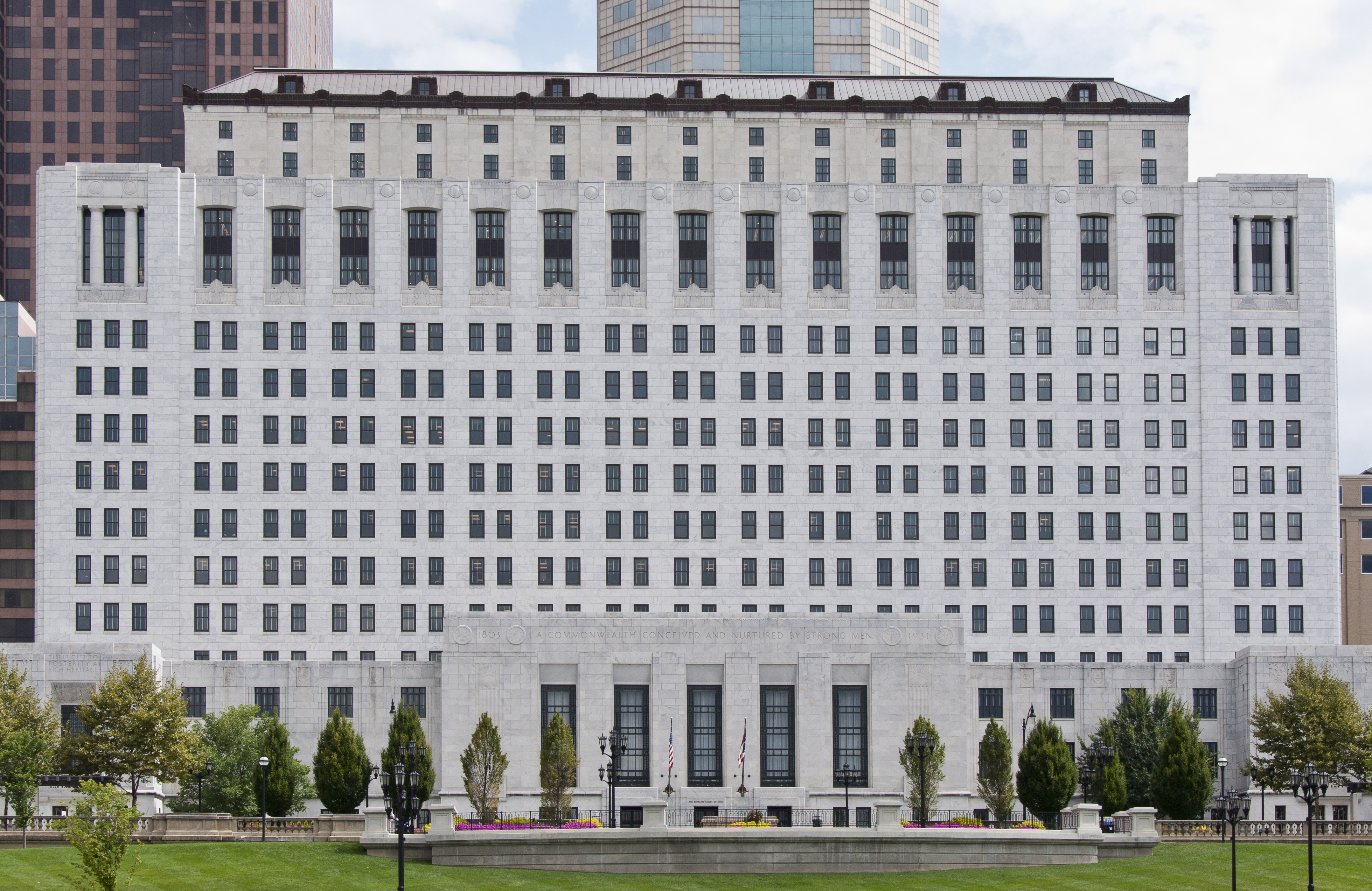|
David Tod
David Tod (February 21, 1805 – November 13, 1868) was an American politician and industrialist from the U.S. state of Ohio. As the 25th governor of Ohio, Tod gained recognition for his forceful and energetic leadership during the American Civil War. A Democrat who supported the war effort, Tod helped to maintain a fragile alliance between the state's Republicans and War Democrats and took steps to secure Ohio's borders. In 1863, the state's Union Party did not nominate Tod for a second term because of his tepid support for emancipation and his unpopularity among the state's myriad political factions. After completing his two-year term as Ohio governor, Tod turned down an invitation to serve in the government of President Abraham Lincoln as Secretary of the Treasury, citing poor health. Tod died of a stroke in 1868, three years after the end of the war and was interred in Oak Hill Cemetery (Youngstown, Ohio). A biography of David Tod by Joseph Lambert Jr. was published in 2 ... [...More Info...] [...Related Items...] OR: [Wikipedia] [Google] [Baidu] |
List Of Governors Of Ohio
The governor of Ohio is the head of government of Ohio and the commander-in-chief of the U.S. state's Ohio National Guard, military forces. The officeholder has a duty to enforce state laws, the power to either approve or veto bill (proposed law), bills passed by the Ohio General Assembly, the power to convene the legislature and the power to grant pardons, except in cases of treason and Impeachment in the United States, impeachment. There have been 64 governors of Ohio, serving 70 distinct terms. The longest term was held by Jim Rhodes, who was elected four times and served just under sixteen years in two non-consecutive periods of two terms each (1963–1971 and 1975–1983). The shortest terms were held by John William Brown and Nancy Hollister, who each served for only 11 days after the governors preceding them resigned in order to begin the terms to which they had been elected in the United States Senate; the shortest-serving elected governor was John M. Pattison, who died i ... [...More Info...] [...Related Items...] OR: [Wikipedia] [Google] [Baidu] |
War Democrats
War Democrats in American politics of the 1860s were members of the Democratic Party who supported the Union and rejected the policies of the Copperheads, or Peace Democrats. The War Democrats demanded a more aggressive policy toward the Confederacy and supported the policies of Republican President Abraham Lincoln when the American Civil War broke out a few months after his victory in the 1860 presidential election. Ohio In the critical state elections in Ohio in 1862, the Republicans and War Democrats formed the National Union Party. This led to victory over the Democrats, led by Copperhead Clement Vallandigham; however, it caused trouble for Radical Republican Senator Benjamin Wade's reelection bid. War Democrats opposed Wade's radicalism, and Wade refused to make concessions to their point of view. He was narrowly reelected by the legislature. In 1863, the Ohio gubernatorial campaign drew national attention. Ohio Republicans and War Democrats were dissatisfied w ... [...More Info...] [...Related Items...] OR: [Wikipedia] [Google] [Baidu] |
Cleveland And Mahoning Valley Railroad
The Cleveland and Mahoning Valley Railroad (C&MV) was a shortline railroad operating in the state of Ohio in the United States. Originally known as the Cleveland and Mahoning Railroad (C&M), it was chartered in 1848. Construction of the line began in 1853 and was completed in 1857. After an 1872 merger with two small railroads, the corporate name was changed to "Cleveland and Mahoning Valley Railroad". The railroad leased itself to the Atlantic and Great Western Railway in 1863. The C&MV suffered financial instability, and in 1880 its stock was sold to a company based in London in the United Kingdom. A series of leases and ownership changes left the C&MV in the hands of the Erie Railroad in 1896. The CM&V's corporate identity ended in 1942 after the Erie Railroad completed purchasing the railroad's outstanding stock from the British investors. A number of ownership changes since 1942 have left the track in various corporate hands. Portions of the track are now biking and hiking ... [...More Info...] [...Related Items...] OR: [Wikipedia] [Google] [Baidu] |
Mahoning Valley
The Youngstown–Warren, OH Metropolitan Statistical Area, typically known as the Mahoning Valley, is a metropolitan area in Northeast Ohio with Youngstown, Ohio, at its center. According to the United States Census Bureau, U.S. Census Bureau, the metropolitan statistical area (MSA) includes Mahoning County, Ohio, Mahoning and Trumbull County, Ohio, Trumbull counties. As of the 2020 United States Census, 2020 census, the region had a population of 430,591, making it the List of metropolitan statistical areas, 125th-largest metro area in the country. Taking its name from the Mahoning River, the area has a large commuter population that works in Cleveland and Pittsburgh and their metropolitan areas. It is located in the Rust Belt, the former industrial region of the northern United States. The Youngstown–Warren–Salem combined statistical area adds the Salem, Ohio, Salem United States micropolitan area, micropolitan area and Columbiana County, Ohio to the region, increasing t ... [...More Info...] [...Related Items...] OR: [Wikipedia] [Google] [Baidu] |
Warren, Ohio
Warren is a city in Trumbull County, Ohio, United States, and its county seat. The population was 39,201 at the 2020 United States census, 2020 census. Located along the Mahoning River, Warren lies approximately northwest of Youngstown, Ohio, Youngstown and southeast of Cleveland. It was the historical county seat of the Connecticut Western Reserve and is a principal city of the Mahoning Valley, Youngstown–Warren metropolitan area in Northeast Ohio. History Ephraim Quinby founded Warren in 1798, on of land that he purchased from the Connecticut Land Company, as part of the Connecticut Western Reserve. Quinby named the town for the town's surveyor, Moses Warren. The town was the county seat of the Western Reserve, then became the Trumbull County seat in 1801. In 1833, Warren contained county buildings, two printing offices, a bank, five mercantile stores, and about 600 inhabitants. Warren had a population of nearly 1,600 people in 1846. In that same year, the town had five ... [...More Info...] [...Related Items...] OR: [Wikipedia] [Google] [Baidu] |
Geauga County, Ohio
Geauga County ( ) is a county located in the northeast portion of the U.S. state of Ohio. As of the 2020 census, the population was 95,397. The county seat and largest city is Chardon. The county is named for an Onondaga or Seneca language word meaning 'raccoon', originally the name of the Grand River. Geauga County is part of the Cleveland, OH Metropolitan Statistical Area. In 2008, Forbes Magazine ranked Geauga County as the fourth best place in the United States to raise a family. About 20% of the counties area (Geauga, Trumbull, Ashtabula and Portage) population is Amish, . History Geauga County is named after the Onondaga word ''jyo’ä·gak'' or Seneca ''jo’ä·ka'', both meaning 'raccoon' (originally the name of the Grand River). After the discovery of the New World, the land that became Geauga County was originally part of the French colony of Canada (New France), which was ceded in 1763 to Great Britain and renamed Province of Quebec. In the late 18th ce ... [...More Info...] [...Related Items...] OR: [Wikipedia] [Google] [Baidu] |
Ohio Supreme Court
The Supreme Court of the State of Ohio is the highest court in the U.S. state of Ohio, with final authority over interpretations of Ohio law and the Ohio Constitution. The court has seven members, a chief justice and six associate justices, who are elected at large by the voters of Ohio for six-year terms. The court has a total of 1,550 other employees. Since 2004, the court has met in the Thomas J. Moyer Ohio Judicial Center (formerly known as the Ohio Departments Building) on the east bank of the Scioto River in Downtown Columbus. Prior to 2004, the court met in the James A. Rhodes State Office Tower and earlier in the Judiciary Annex (now the Senate Building) of the Ohio Statehouse. The Ohio Supreme Court and the rest of the judiciary is established and authorized within Article IV of the Ohio Constitution. History The Supreme Court of Ohio was founded in 1802, established in the state constitution as a three-member court, holding courts in each county every year. ... [...More Info...] [...Related Items...] OR: [Wikipedia] [Google] [Baidu] |
Connecticut Western Reserve
The Connecticut Western Reserve was a portion of land claimed by the Colony of Connecticut and later by the state of Connecticut in what is now mostly the northeastern region of Ohio. Warren, Ohio was the Historic Capital in Trumbull County. The Reserve had been granted to the Colony under the terms of its charter by King Charles II. Connecticut relinquished its claim to some of its western lands to the United States in 1786 following the American Revolutionary War and preceding the 1787 establishment of the Northwest Territory. Despite ceding sovereignty to the United States, Connecticut retained ownership of the eastern portion of its cession, south of Lake Erie. It sold much of this "Western Reserve" to a group of speculators who operated as the Connecticut Land Company; they sold it in portions for development by new settlers. The phrase Western Reserve is preserved in numerous institutional names in Ohio, such as Western Reserve Academy, Case Western Reserve University ... [...More Info...] [...Related Items...] OR: [Wikipedia] [Google] [Baidu] |
Suffield, Connecticut
Suffield is a town in Hartford County, Connecticut, United States. The town is part of the Capitol Planning Region, Connecticut, Capitol Planning Region, and located in the Connecticut River Valley. As of the 2020 United States census, 2020 census, the population was 15,752. The town center is a census-designated place listed as Suffield Depot, Connecticut, Suffield Depot. Bordering Massachusetts, Suffield is part of the Springfield, Massachusetts New England city and town area, NECTA. It was once within the boundaries of Massachusetts. History Originally known as Southfield—pronounced "Suffield," on May 20, 1674, the committee for the settling of the town petitioned: The petition was granted by the Massachusetts Bay court on June 8, 1674. Suffield was incorporated as a town in March 1682. Also, on early 17th and 18th century maps, Suffield was alternatively spelled as Suthfield. Suffield and the surrounding area were part of the Equivalent Lands compromise with Massachuse ... [...More Info...] [...Related Items...] OR: [Wikipedia] [Google] [Baidu] |
Scottish People
Scottish people or Scots (; ) are an ethnic group and nation native to Scotland. Historically, they emerged in the Scotland in the Early Middle Ages, early Middle Ages from an amalgamation of two Celtic peoples, the Picts and Gaels, who founded the Kingdom of Scotland (or ''Kingdom of Alba, Alba'') in the 9th century. In the following two centuries, Celtic-speaking Hen Ogledd, Cumbrians of Kingdom of Strathclyde, Strathclyde and Germanic-speaking Anglo-Saxons, Angles of Northumbria became part of Scotland. In the Scotland in the High Middle Ages, High Middle Ages, during the 12th-century Davidian Revolution, small numbers of Normans, Norman nobles migrated to the Lowlands. In the 13th century, the Norse-Gaels of the Kingdom of the Isles, Western Isles became part of Scotland, followed by the Norsemen, Norse of the Northern Isles in the 15th century. In modern usage, "Scottish people" or "Scots" refers to anyone whose linguistic, cultural, family ancestral or genetic origin ... [...More Info...] [...Related Items...] OR: [Wikipedia] [Google] [Baidu] |
George Tod (judge)
George Tod (December 11, 1773 – April 11, 1841) was an American politician, jurist and soldier who was a senator in the Ohio State Senate, and an Ohio Supreme Court Judge (1806-1810). He fought in the War of 1812. Early life Tod was born in Suffield, Connecticut, and graduated from Yale in 1797. He taught school, studied law at Litchfield Law School, and was admitted to the bar in Connecticut. He married Sallie Isaacs in 1797. She was sister in law of Governor Ingersoll. Children Charlotte and Jonathan were born in Connecticut. Upton 1910, p. 80 In 1808, he took on as an apprentice, the young Jesse Root Grant, the future father of Ulysses S. Grant, for four years. The West Tod came to the Western Reserve in 1800. He was appointed Prosecuting Attorney of Trumbull County that year. He was a township clerk 1802-1804. Tod was elected to the Ohio Senate for the third and fourth General Assemblies, 1804-1806. In 1806 the Ohio Legislature appointed him a judge of the Ohio Supreme ... [...More Info...] [...Related Items...] OR: [Wikipedia] [Google] [Baidu] |
Oak Hill Cemetery (Youngstown, Ohio)
Oak Hill Cemetery is a place of burial located in Youngstown, Ohio. It is a garden style cemetery (also known as a Rural cemetery) featuring memorials to multiple notable figures. The cemetery was formed after the Mahoning Valley Cemetery Association purchased the land in 1853 from Dr. Henry Manning, a local physician who is himself buried within the cemetery. The cemetery was formally established in 1854. The cemetery began an endowment fund in 1922 that lead to it becoming one of the most endowed cemeteries, measured by dollar per acre, in the state of Ohio. Many of the original cemeteries within the city, then still the Village of Youngstown, had their interments moved to Oak Hill Cemetery. Many of Youngstown, Ohio, Youngstown's first settlers are buried here, including Daniel Sheehy and Colonel James Hillma History Youngstown Township Cemetery The Youngstown Township cemetery was formed in 1856 from three acres of land adjacent to Oak Hill Cemetery. Dr. Henry Manning ag ... [...More Info...] [...Related Items...] OR: [Wikipedia] [Google] [Baidu] |








